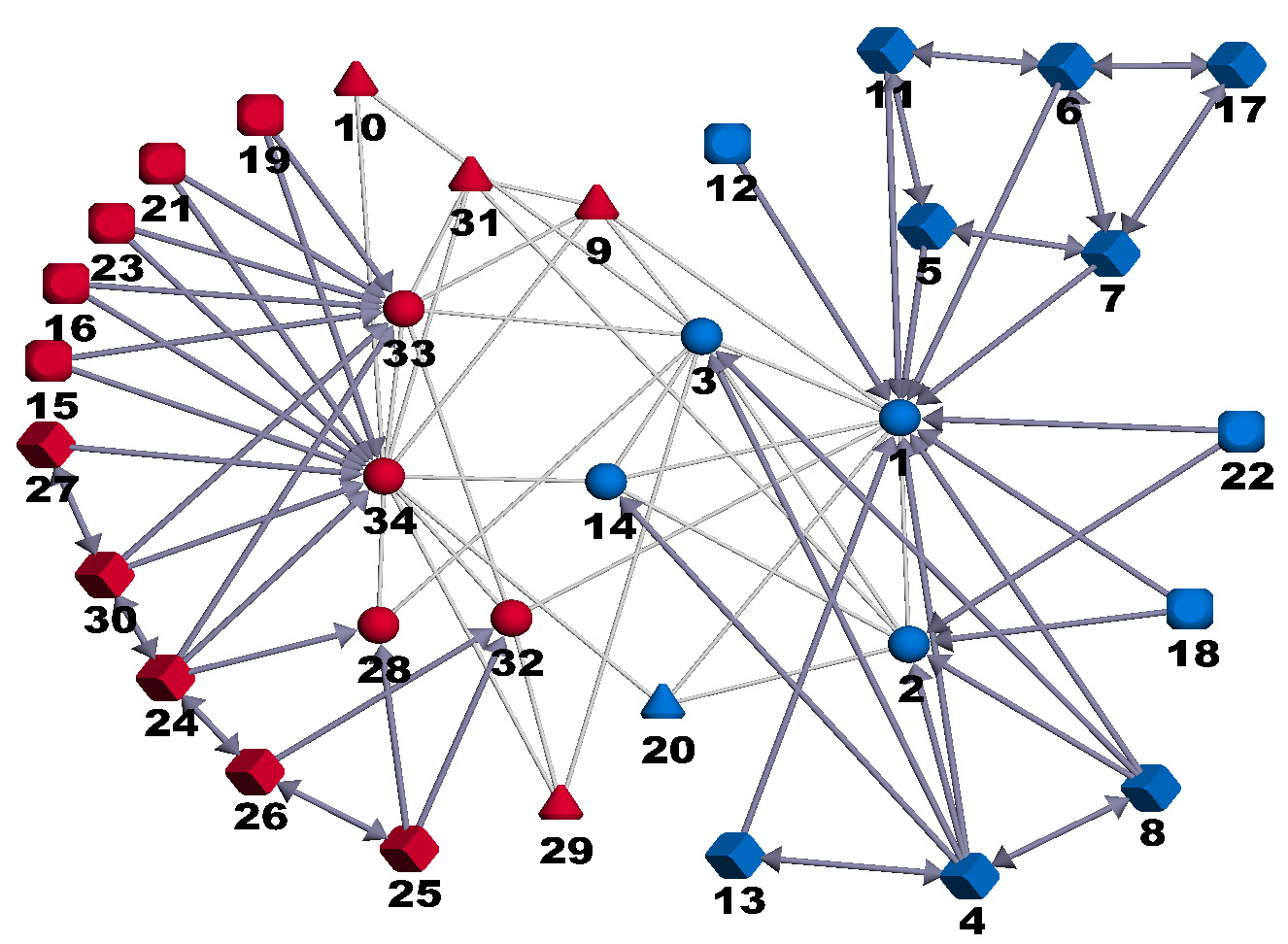Structure inference in complex networks

|

|

Stabilizer analysis |
Networks are useful representations of the interactions among the components of complex systems. Still if we want to gain further insights concerning organization principles or global symmetries of the system at hand, it is important to count with tools able to extract information given a graph. Some examples are the so-called communities, groups of nodes with a higher tendency to interact between themselves than with the rest of the network forming relatively isolated clusters, and all the different
clustering techniques proposed to find them. Also in some other occasions, a ranking of the nodes can be objectively established
as for instance in socioeconomic systems with the wealth, or in transport networks with the nodes capacities. Studying whether and to
what extend the elites (based on the ranking variable) control the system resources is an important issue that has gone under the name of rich-club phenomenon in our area. Developing tools to measure this type of phenomena in a critical way, extracting information out of
the networks about the mechanisms that led to their formation and time evolution, has become one of my research objectives.
My work in this field has been guided by the following principles
- Define the different networks properties to study
- Propose tools to quantitatively measure them in the graphs
- Estimate the significance level of such measures as compared with an appropriate null models
- Measure the amount of information that graphs can bear.
Some recent publications (see the publication list for pdfs):
- Finding statistically significant communities in networks
Andrea Lancichinetti, Filippo Radicchi, José J. Ramasco and Santo Fortunato
arXiv: 1012.2363
- Information filtering in complex weighted networks
Filippo Radicchi, José J. Ramasco and Santo Fortunato
arXiv: 1009.2913
- Combinatorial approach to Modularity
Filippo Radicchi, Andrea Lancichinetti and José J. Ramasco
Physical Review E 82, 026102 (2010).
- Stability of maximum-likelihood-based clustering methods: exploring the backbone of classifications
(a.k.a. Who is keeping you in that community?)
Muhittin Mungan and José J. Ramasco
J. Stat. Mech. (2010) P04028.
- Statistical significance of communities in networks
Andrea Lancichinetti, Filippo Radicchi and José J. Ramasco
Physical Review E 81, 046110 (2010).
- Renormalization flows in complex networks
Filippo Radicchi, Alain Barrat, Santo Fortunato and José J. Ramasco
Physical Review E 79, 026104 (2009).
- Prominence and Control: The Weighted Rich-Club Effect
Tore Opsahl, Vittoria Colizza, Pietro Panzarasa and José J. Ramasco
Physical Review Letters 101, 168702 (2008).
- Complex networks renormalization: flows and fixed points
Filippo Radicchi, José J. Ramasco, Alain Barrat and Santo Fortunato
Physical Review Letters 101, 148701 (2008).
- Inversion method for content-based networks
José J. Ramasco and
Muhittin Mungan
Physical Review E 77, 036122 (2008).
Back

